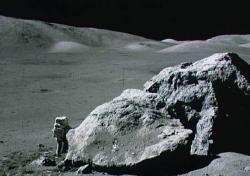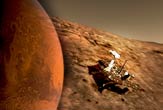Scientists have detected an Earth-like planet orbiting a relatively cool star near the center of our galaxy. The star is located in the Sagittarius constellation, and is about five times more massive than Earth.
(Red Orbit) "This planet is actually the first and only planet that has been discovered so far that is in agreement with the theories for how our solar system formed," said Uffe Grae Jorgensen, an astronomer with the Niels Bohr Institute in Copenhagen, Denmark, and a member of the discovery team.
Over 150 worlds have been discovered orbiting stars, but with the exception of this world all defy the evolutionary theory of solar system formation, which may hint at the possibility of a Creator.
Although unconfirmed on whether this world harbors life on it, many researches doubt that any would survive on this world as its environment may be similar to that of Pluto's.

(Red Orbit) Researchers don't think the planet can sustain life, given that it has an estimated surface temperature of minus-364 degrees Fahrenheit, about the same as Pluto's. While it may have a thin atmosphere, the planet's rocky surface is probably covered with deep frozen oceans.
More and more worlds are being discovered outside our solar system, although humanity has still yet to find one that is habitable for its species.
This world would probably be impossible to terraform, although if water ice was detected upon its surface, we would find little difficulty in colonizing this world--that is if we can get there.













![ColonyWorlds[at]Gmail[dot]com](http://img.photobucket.com/albums/v438/hiddennook/ColonyWorlds.png)






